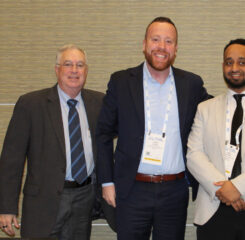In March 2024, the Health Resources & Services Administration (HRSA) released its findings of the 2022-2023 National Sample Survey of Registered Nurses (NSSRN). Administered by the National Center for Health Workforce Analysis, in collaboration with the U.S. Census Bureau, the survey poses questions to registered nurses across the United States, receiving responses from 50,000 registered nurses (RN). Spanning 46 years, this is the longest longitudinal study of RNs in the United States, gathering data every four years that provides critical information and context about the healthcare infrastructure. This is the first survey since the onset of the pandemic.
Key Findings
Demographics: Nursing continues to be the nation’s largest health care profession, with an estimated 4.3 million actively licensed nurses currently practicing in the United States (US). Mirroring overall population trends, the nursing workforce continues to diversify, with Black and Asian RNs now comprising 11% and 9% of the RN workforce, respectively. Male-identifying nurses now represent 12% of the RN workforce.
Training and Education: Highlighting the importance of professional and training pathways, 70% of respondents said they were employed in a health-related job prior to completing their first nursing degree. The most common were nursing assistants (CNA) (45%), Licensed Practical Nurses/Licensed Vocational Nurse (LPN/LVN) (16%), or home health aides (10%). Respondents also indicated a significant shift toward online degrees, with 46% of RNs completing at least part of their degree online between 2016 and 2020, an increase of more than 25% from the prior survey. More than half of respondents borrowed money to finance a degree, accounting for nearly $48 billion of student loan debt outstanding. Nearly half (45%) of the nurses used federally supported student loans to finance at least part of their initial nursing degree.
Advanced Practice Nursing: Only 11% of RNs have completed an additional degree, qualifying them as an Advanced Practice Registered Nurse (APRN). This finding underscores the continued challenges to the nursing education pipeline, as so few APRNs are available to act as nurse faculty to train and develop future generations of health care providers.
Employment: 3.5 million RNs work full-time, with 85% providing direct patient care. Travel nursing opportunities have grown since the 2018 survey, accounting for about 5% of the total RN workforce. However, these nurses tend to be younger, with only 13% of the travel nursing workforce over the age of 55.
COVID-19: Nurses continue to experience generally high job satisfaction, but dissatisfaction has grown, with 11% of respondents reporting dissatisfaction in 2017 vs 20% in 2021. At the height of the pandemic in 2021, 26% of RNs said they felt burnout every day. Younger nurses were more likely to report burnout, with 93% of RNs aged 34 or younger reporting feeling burned out compared to 85% of RNs aged 35 – 54 and 71% of RNs aged 55 and older. Approximately 195,000 RNs, or 5% of the workforce, left the sector due to the pandemic. While 43% indicated their intent to return to the sector, 19% said they did not intend to return. Survey respondents who left the nursing workforce reported leaving for three primary reasons; high-risk working conditions (51%), being overworked or burned out (50%) and inadequate staffing (39%), or unsatisfactory safety protocols (37%)
The Future of the Nursing Workforce: Survey responses indicate nursing shortages are likely to continue. Demand for RNs in 2036 is projected to exceed supply by 9%, resulting in a shortage of 337,970 full-time equivalents (FTE). Projected shortages of LVN/LPN LPNs are slightly greater, at an estimated 12% by 2036. While national nurse shortages will continue, they will not be equal across the United States. Non-metro areas are projected to have a shortage of 14%, nearly double their urban area counterparts.

 Shutdown Week Three: Impact of Ongoing Closure on Affordable Housing
Shutdown Week Three: Impact of Ongoing Closure on Affordable Housing Colleagues on the Move, December 17, 2025
Colleagues on the Move, December 17, 2025


